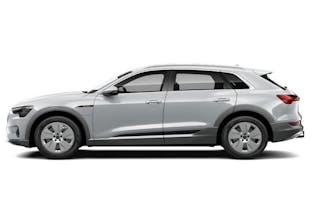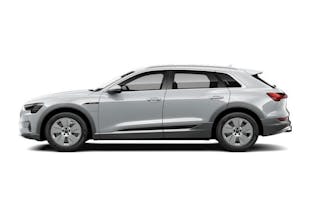Toyota RAV4 PHEV car review
One week living with the Toyota RAV4 PHEV.

If you want a new hybrid RAV4, you’ll have to wait a really long time for one. The mild hybrid version is very popular and has been on sale for a few years now. But there’s also another model that not everyone knows about – a plug-in hybrid version.
This model is selling like hotcakes overseas (it’s called the RAV4 Prime in the US), but Toyota NZ hasn’t ever brought them new into the country. However, it’s looking at bringing in some used examples. Fingers crossed this eventuates because we were lent one for the week and it’s fantastic!

First impressions
The PHEV RAV (PRAV4? PHEV4? PHRAV4?) has the same exterior skin and 2.5L petrol engine as a regular RAV4, but the similarities stop when you look deeper at the specs.
The main thing that stands out (aside from a much bigger battery) is the power output. The combined output of the hybrid models is 163kW, compared with 225kW from the PHEV. That’s turned a sedate SUV into a quick one. Apparently, it can get to 100kph in about 6 seconds.
Our testing programme has us driving vehicles in a sedate, everyday way and not flooring it at every opportunity. However, luckily I had a bit of time up my sleeve and can report that this car is an absolute hoot to drive.
The big battery (18.1kWh) also means that there’s a big EV range. When I switched on the car after fully recharging the battery, it gave me a predicted range of 91km. The most I’ve seen in other PHEVs is in the vicinity of 60km.
How we test
Each vehicle we trial gets the same treatment: a week of commuting in rush hour from Lower Hutt to Consumer HQ (a round trip of 28km); a run to the supermarket; and a drive over the Remutaka Hill and back, to see how it goes on a longer weekend trip. In total this makes for about 270km of motoring.
We record fuel use (both actual and on the trip computer) and measure electricity usage where appropriate, with PHEVs and EVs. The actual fuel use is measured by filling the tank to the brim at the start of the trial and then again at the end, and comparing numbers. It’s an inexact science that we use as a check, but it’s still a real-world appraisal.
Commuting

I had driven the Hybrid version a few weeks earlier so it was easy to compare the two. Silent and smooth are two words that best explain my time when driving the plug-in PHEV to work. It will jump out of EV mode if you put your foot down at roundabouts, but the petrol engine switches off again after about 30 seconds of not being needed.
Arriving home after the total of 28km of EV driving, the car was telling me that I still had 54km of range left. I could probably get away with two days of commuting before needing to recharge, but I kept things topped up at the end of each day anyway.
Supermarket trip
It doesn’t feel small in the carpark, nor does it feel gargantuan. It’s easiest to manoeuvre into parks when you have the top-down camera activated as you get a nice 360° view of your surroundings – that helps shrink the car and give you some confidence. It is activated when in reverse or when you press the camera view button next to the steering wheel.
The boot is big, though not as spacious as the Hybrid model as some space it taken by the batteries.
Longer journey
For me, this model has set the record for a PHEV. It’s the first one to get from my house in Lower Hutt to Martinborough on a single charge. That’s just over 70km of very taxing driving for an EV. The battery was right on empty, and it switched over to regular hybrid motoring as soon as I started the trip home. Even so, it’s pretty good going considering most of the other ones run out after about 40km on this route.
It’s interesting to note that the car felt at its quickest when the battery was depleted and it was working as a regular hybrid. It instantly engages both motors at the same time, rather than dithering for a bit before deciding to do it. That does mean you listen to the petrol engine though (it’s miles more peaceful to drive in EV mode).
Final thoughts

This is superior to the regular hybrid RAV4. It actually blew the other one out of the water, in my opinion. It’s quieter, smoother and faster. To top it off, we ran it at nearly half the cost per 100km ($7.66 vs $14.19).
The main problem here is if you’ll ever be able to get your hands on one. You can’t buy one new here, and while Toyota might be bringing them in secondhand, the model will never flood the market in great numbers. There’s no indication of pricing, but a direct conversion of the 2023 price in the US is $68k new. Still, if you’re industrious, you could potentially buy one in Japan and have it shipped over.
Your other option is to take a look at the Lexus NX450h+ which has the same engine. Just be prepared to pay premium prices though.
The cool thing about doing car reviews is that you’re always looking forward to the next one, but I was genuinely morose when I had to give this one back. This is simply just a really, really good car that I would be very pleased to own myself. If you can get your hands on one, do it.
Toyota claims 1.2L/100km for the PHEV. The trip computer was only giving us a 19.1kWh/100km readout rather than the petrol usage so we couldn’t find what the car predicted. Our actual fuel usage suggested 1.4L/100km.
The vehicle was kindly lent to us by Toyota NZ.
We've tested 95 electric and hybrid cars.
Find the right one for you.
Audi

Audi

Audi

Member comments
Get access to comment